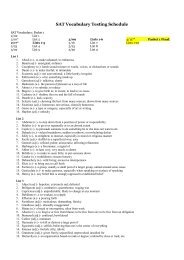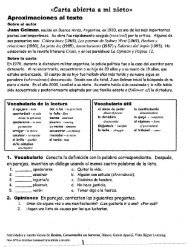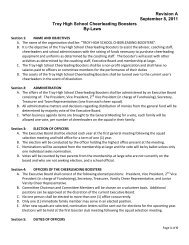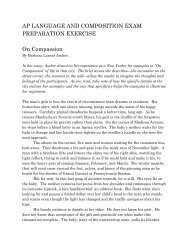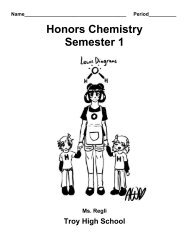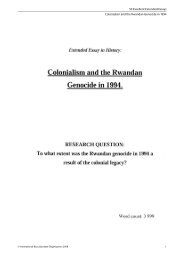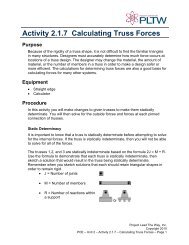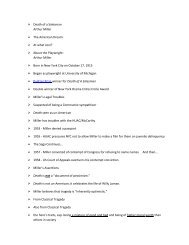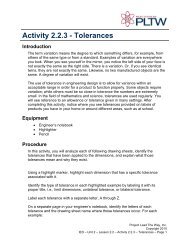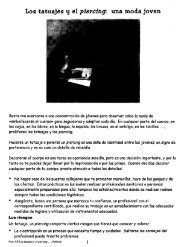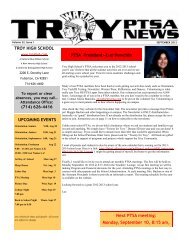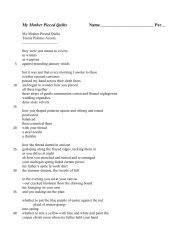FRQ 7 and 8 answers - Troy High School
FRQ 7 and 8 answers - Troy High School
FRQ 7 and 8 answers - Troy High School
You also want an ePaper? Increase the reach of your titles
YUMPU automatically turns print PDFs into web optimized ePapers that Google loves.
2 points - 1 point persistence explained + 1 point<br />
Bioaccumulation or Biomagnification explained<br />
Persistence<br />
− DDT is a POP (Persistent Organic Pollution) <strong>and</strong> therefore it does not easily<br />
biodegrade because it is fat soluble <strong>and</strong> stored in the fatty tissues of animals<br />
Bioaccumulation or Biomagnification EXPLAINED<br />
− Because of this it remains in an environment <strong>and</strong> can be bioaccumulated in increasing<br />
concentrations in the fatty tissue of organisms . overtime.<br />
− It is passed from predator to prey up the food chain. Because of the loss of energy at<br />
each trophic level more biomass must be consumed at each level <strong>and</strong> therefore the<br />
concentration of the DDT increases as you move up the food chain.<br />
(ii) Who is most affected, why?<br />
2 points - 1 point name + 1 point discussion why<br />
Possible <strong>answers</strong>- must be named <strong>and</strong> include a discussion of why<br />
• Top level consumers — because of biomagnification up the food chain<br />
• Animals in aquatic environments- because the food chains are often much<br />
more extensive <strong>and</strong> the bioaccumulation is greater<br />
• Infants who are transferred the DDT through the mother's milk <strong>and</strong> are at greater<br />
risk due to size <strong>and</strong> reduced ability to detoxify system<br />
• Mothers – at risk of transferring it to their unborn fetus<br />
• Birds of prey- top level consumers who's endocrine system is affect so that their<br />
eggs do not sufficiently harden <strong>and</strong> offspring are lost<br />
(c) How could DDT be used to alleviate malaria?<br />
1 point<br />
DDT is a potent pesticide, <strong>and</strong> spraying it could kill the anopheles mosquitoes, the<br />
vector of malaria.<br />
(d) Argue your risk assessment of human health between the risks of DDT exposure <strong>and</strong><br />
malaria exposure.<br />
Argue one side – 2 points<br />
MORE RISK WITH DDT<br />
MORE RISK WITHOUT DDT<br />
- So many of the side effects from DDT - More people die a year from malaria<br />
exposure are not well documented <strong>and</strong> exposure than the accumulated possible<br />
can occur over long periods of time.<br />
side effects from DDT<br />
- If there are non-toxic options shouldn't<br />
the precautionary principal be used.<br />
- Should not trade one human health<br />
adverse affect for another- verses<br />
looking for healthy <strong>and</strong> sustainable<br />
alternative.



